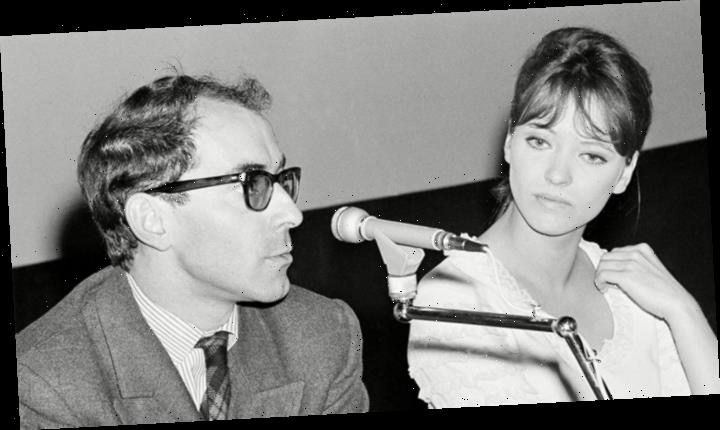With the passing of Anna Karina, a curtain has fallen on the French New Wave, that fabled cinematic movement that brought fame to the man who made her name, Jean-Luc Godard. Yes, Godard is still with us, as is “Breathless” star Jean-Paul Belmondo (practically the last of the living New Wave legends), but his moviemaking compatriots François Truffaut, Eric Rohmer, Jacques Rivette, Jacques Demy, and, most recently, Agnès Varda are gone, and with them the spirit of playful abandon that Karina perfectly embodied.
In such Godard classics as “A Woman is a Woman,” “Pierrot le Fou,” “Alphaville,” and “Made in USA,” Karina appeared as a gamine and a femme fatale at the same time. Not since Josef von Sternberg and Marlene Dietrich had there been a director-and-star tandem so potent. The closest to it would be Philippe Garrel’s partnership with Nico — although the avant-garde blue plate specials made by that pair’s fame never reached audiences the way Godard and Karina’s collaborations did.
“It was like an understanding between us,” Karina told me in 2010 of her collaboration with Godard, on the occasion of a restoration of their 1965 classic, “Pierrot le Fou.” “He would say, ‘Anna, a little bit quicker or a little bit slower.’ That was all. We didn’t do a lot of retakes. With some other actors I know he would do a lot of retakes, but not with me.”
Popular on Variety
It sounds easy, and for them it probably was, as from 1961 to 1967 she served as the muse-cum-leading lady in eight of Godard’s most important works, while being his off-screen spouse at the same time. It was all, as Cole Porter put it, “too hot not to cool down.” But it ended in considerable heat when the couple locked themselves in their apartment and for a week and had a knock-down-drag-out fight memorialized by Jacques Rivette in his film “L’Amour Fou” (1968) with Bulle Ogier and Jean-Pierre Kalfon playing à clef renditions of the Godard/Karina set-to. Needless to say, when they went their separate ways, they had a lot to offer the film world — Karina far less tumultuously than Godard.
Born Hanne Karen Blarke Bayer in Copenhagen in 1940, she was renamed Anna Karina by Coco Chanel, for whom she worked as a model before her acting career began. Interestingly, Godard first caught sight of her not on the fashion runway, but in a TV ad for soap. He first wanted her for a secondary role in his famous debut feature “Breathless” (1959), but she balked as it required nudity. Godard made sport of this a few years later in “A Woman is a Woman” (1961) where Karina plays a stripper, but thanks to the way the film was shot and edited, she is never seen nude — even in the midst of a strip routine. Ironically, it was gay director Luchino Visconti, who first revealed Karina in the altogether in his 1967 adaptation of Albert Camus’ “The Stranger.” Karina showed a new, exceptionally serious performing side of herself in that film as well, co-starring with Marcello Mastroianni.
Other notable film directors who gave Karina important roles that demonstrated the breadth of her talent include Jacques Rivette in his adaptation of Denis Diderot’s salvo against Catholicism, “La Religieuse” (1966) and “Up, Down, Fragile” (1995), his lightweight semi-remake of Stanley Donen’s “Give a Girl a Break” (1997). She became close friends with Hollywood legend George Cukor when she starred for him in “Justine” (1969), and she likewise brightened up Rainer Werner Fassbinder’s dark satire of parent-child dysfunction “Chinese Roulette” (1976).
Arguably her most entertaining film of all is “Anna” (1967), the eye-popping television musical that songwriter Serge Gainsbourg created especially for her. In it, her co-stars Jean-Claude Brialy and Gainsbourg himself appear as a pair of comically pretentious fashion photographers searching for their feminine ideal, yet failing to realize it’s right in front of them in the form of Karina, who plays a secretary who works for them. One of its songs, “Sous le soleil exactement,” was an enormous hit in France and has been, ever since, identified with Karina.
Karina will, of course, always be synonymous with Godard. After him, she went on to marry three more times. Her last husband, actor Dennis Berry (son of blacklisted Hollywood director John Berry) had previously been married to Jean Seberg, who had also been immortalized by Godard as the star of his film “Breathless.” Playing everything from a teen robber (in “Band of Outsiders”) to a zombie-like “seductress” (“Alphaville”) to a hardcore criminal with a romantic streak (“Pierrot le Fou”), Karina became an immortal, too.
“It’s always important,” she told me, “to talk about what Jean-Luc did for me, for everyone.” And because of Anna Karina’s own contribution to Godard’s oeuvre, we always will. Her last film “Victoria” was released in 2008.
Film critic David Ehrenstein has been a devoted fan of Anna Karina’s ever since he saw her dance the “Madison” in “Band of Outsiders” in 1964. In 2010, he had the enormous pleasure of interviewing her.
Source: Read Full Article
